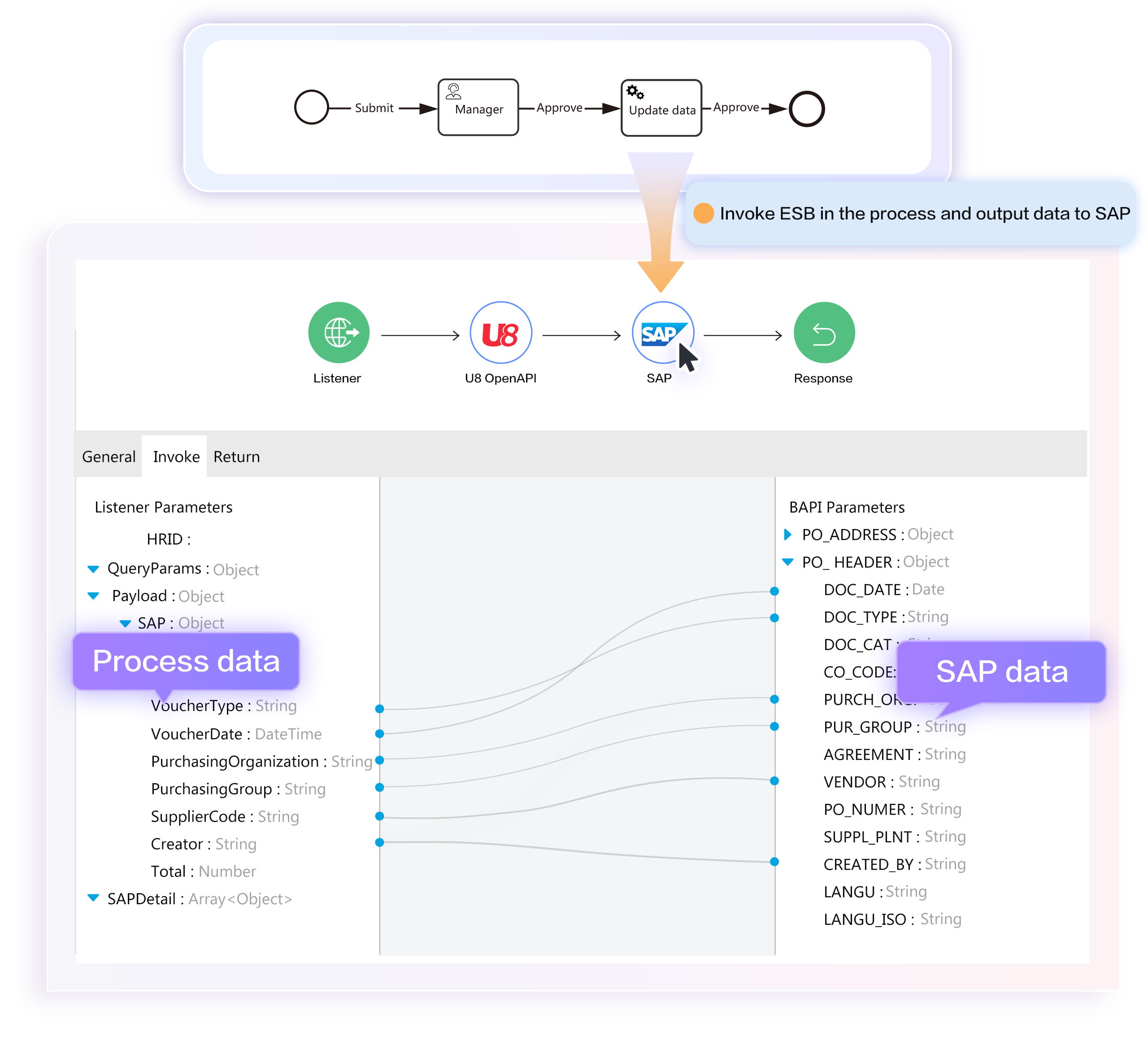Unified worklist
FlowPortal has task lifecycle events, like the start and end events of user tasks. In such events, tasks can be pushed to the third-party worklist of the portal.
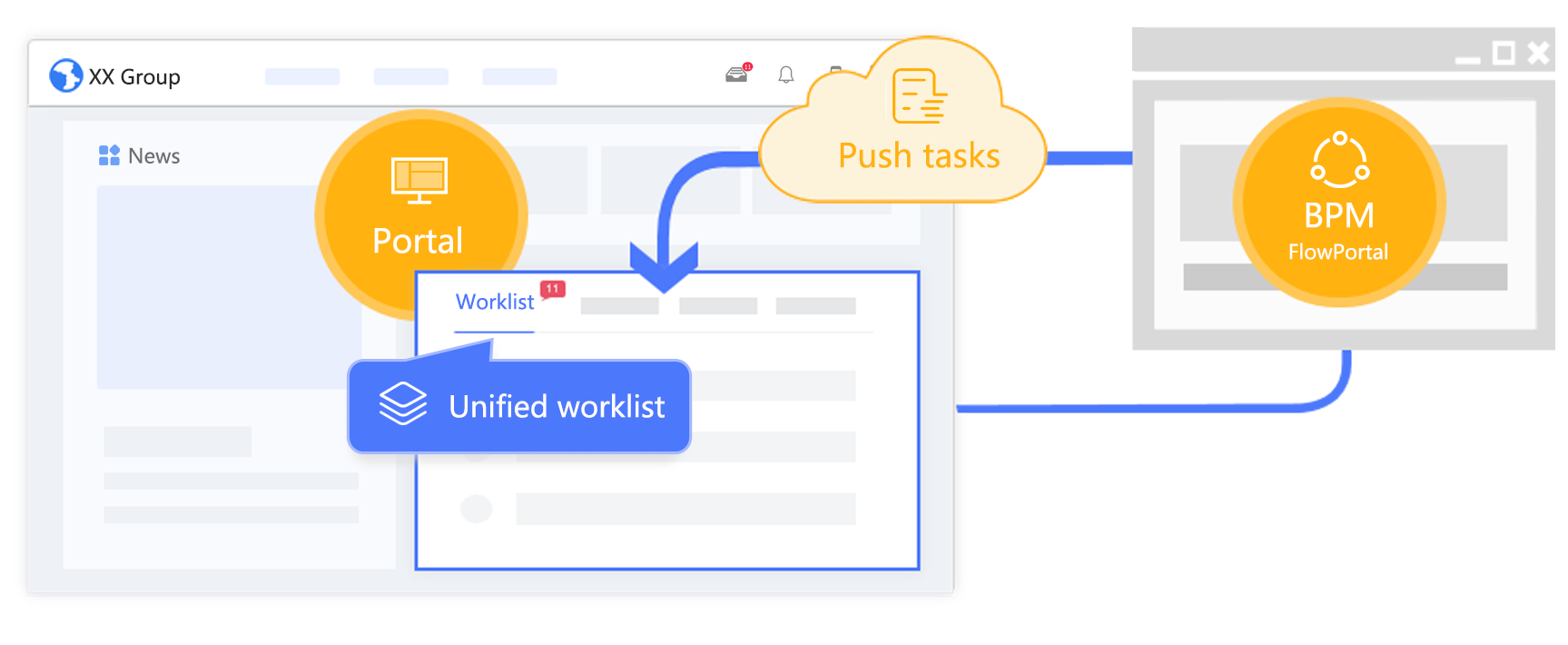
Cross-system process driven
BPMN2 can drive a large process to flow automatically across systems.
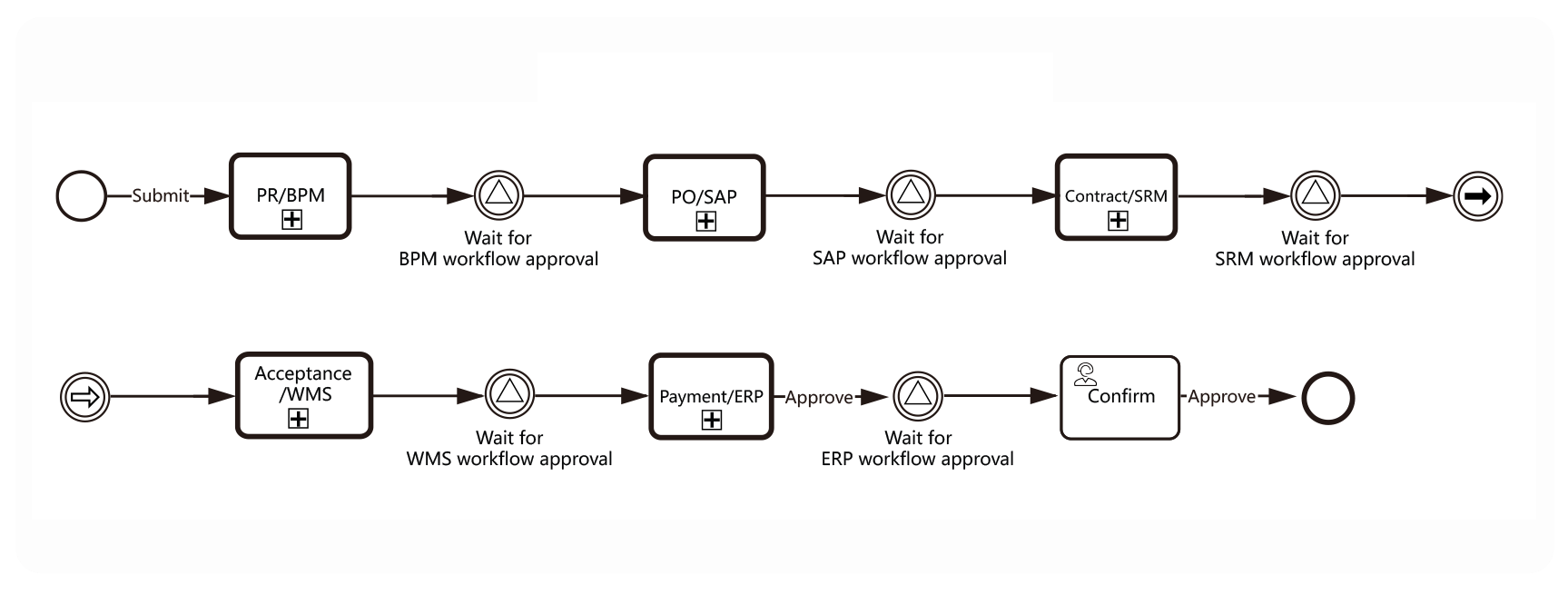
One process engine serving all businesses
FlowPortal opens APIs for third-party systems, enabling their businesses to flow through the BPM platform instead of
having their own built-in process engine.
having their own built-in process engine.
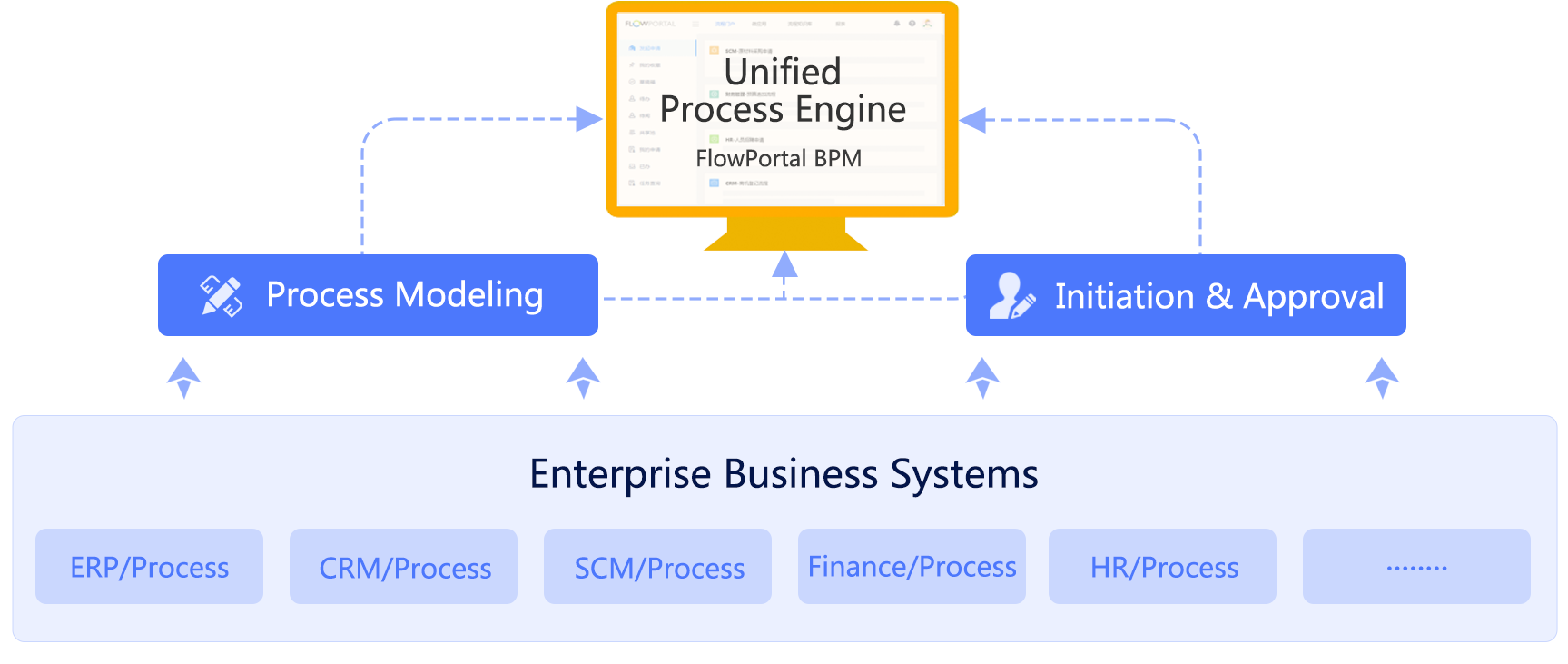
Form data integration architecture
With the help of the FlowPortal data source architecture, forms can use any data in third-party systems, and data integration is visually configured with low code.
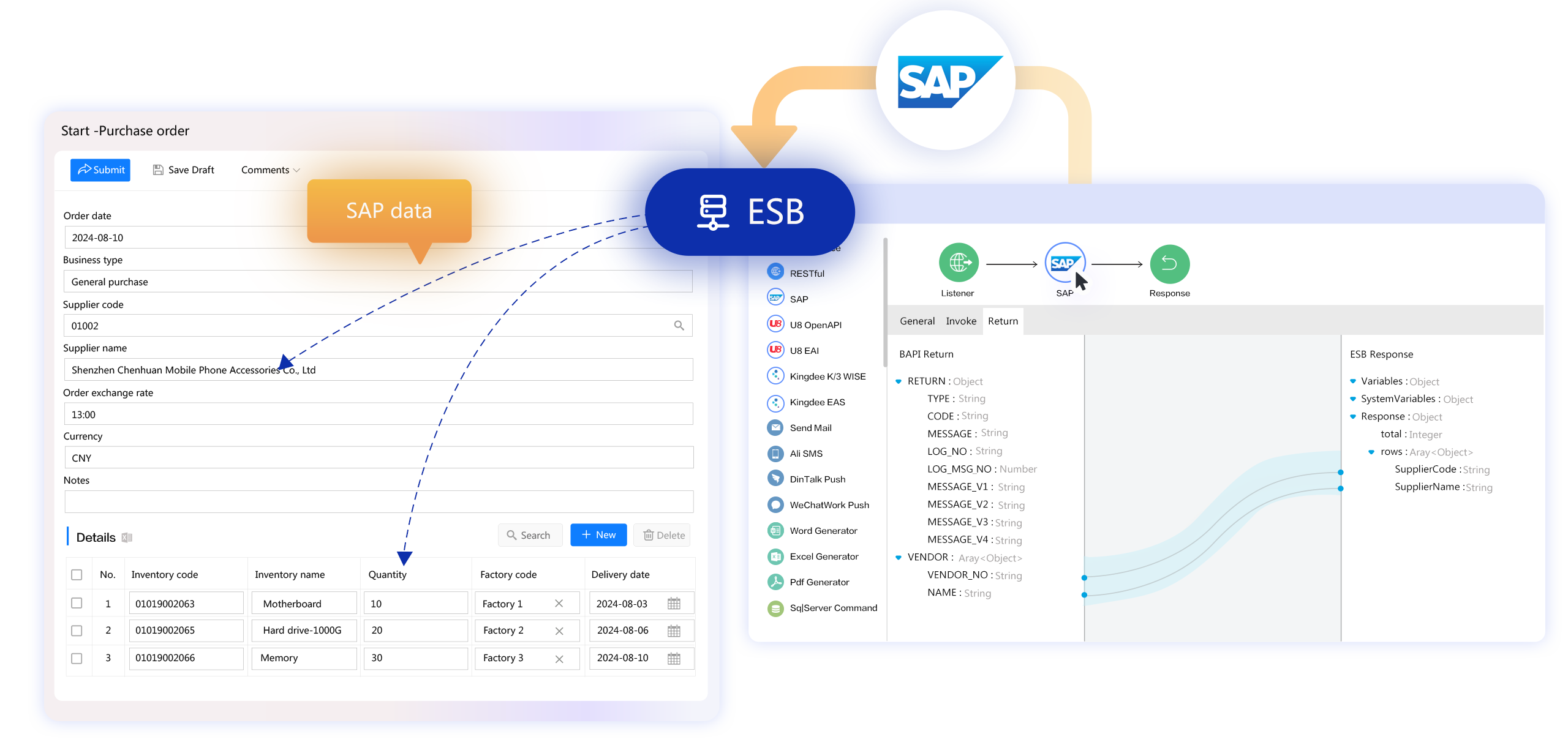
Process output integration
With the help of the FlowPortal ESB, the business output is visually configured and low-code.
